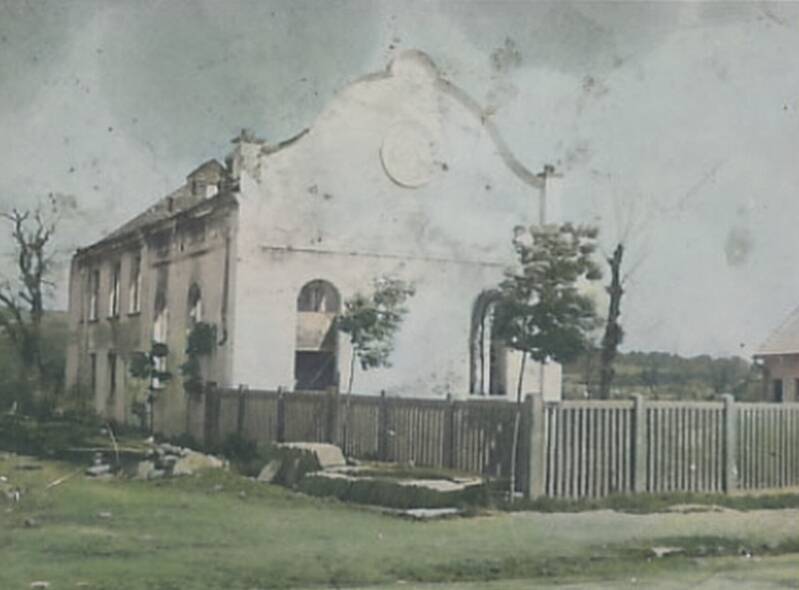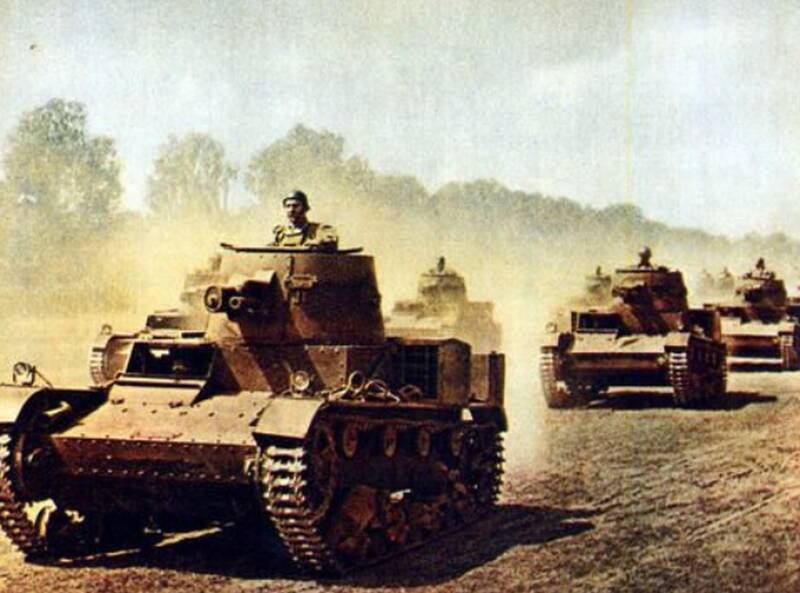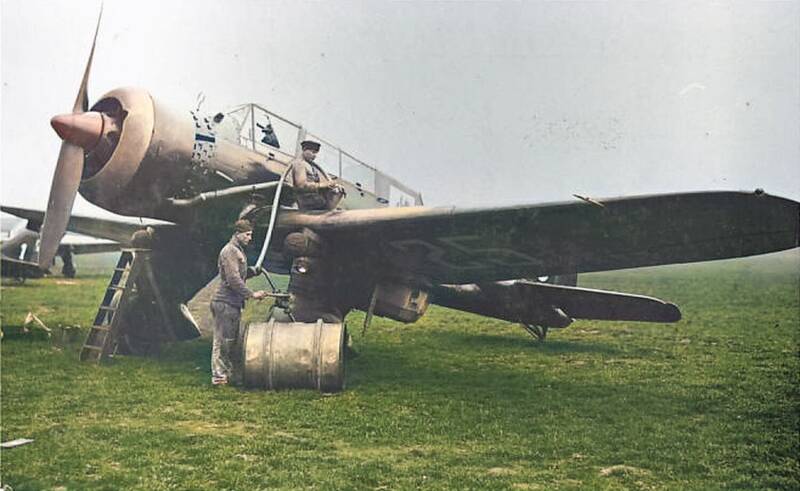Defending Silesia and Lesser Poland
With the outbreak of hostilities between German and Poland on 1 September 1939, the German 14th Panzer Army sent the XVIII Panzer Corps from its position in Slovakia, across the Polish border.
It was an attempt to catch General Antoni Szylling and the Polish Kraków Army off guard by flanking their positions.
Szylling forces were defending Silesia and the western part of Lesser Poland, so the Germans crossed the Tatra pass and attacked the the towns of Chabówka and Nowy Targwith the view to capturing the town of Myślenice no later than the 3rd September.
Achieving this objective would encircle the entire Polish Army fighting in this sector.
Jordanów synagogue in 1939.
https://kolekcjonerski.com.pl/
German assault
Facing the onslaught of the German XVIII Corps was a single infantry regiment of the Border Defence Corps, led by a Lieutenant Colonel Jan Wójcik.
His forces faced the combined might of the 3rd Mountain Division, 2nd Panzer Division and 4th Light Division – all under the command of General Alfred Ritter von Hubicki – a capable commander and winner of the Iron Cross III Class during the First World War.
Despite this, the Poles – helped by local volunteers and units of the National Defence, managed to repel the German assault, albeit at heavy costs to themselves and the resulting loss of the town of Nowy Targ.
Positions of Polish and German forces before the battle.
Lonio17
Polish counterattack
With a risk of a German breakthrough now apparent, General Szylling ordered the Polish 10th Motorized Cavalry Brigade into the fray, sending them to block the gap between Jordanów and Rabka. The brigade reached their positions the next day, with Col. Maczek setting up his headquarters in the village of Krzeczów.
Heavy fighting quickly broke out in the hills to the south of Jordanów, which circled the mountain of Wysoka, as the Polish 24th Motorised Regiment – commanded by Colonel Kazimierz Dworzak – elements of the Border Protection Corps (Korpus Ochrony Pogranicza or KOP) and anti-tank guns, clashed with the German 2nd Panzer Division.
After an early morning artillery barrage at 5AM, the entire German division launched itself at the Poles, who despite suffering heavy losses, managed to repel the Germans, costing the attackers 30 panzers destroyed in the process. However, due to the sheer weight of numbers and technical advantage held by the Germans, eventually – after three failed assaults – they managed to overcome the fierce Polish defence and secure the Wysoka mountain and village.
Having been unable to hold on to their positions, the Poles conducted a withdrawal with the help of one of their trusty armoured trains, its powerful guns helping to discourage any German attempts to intervene.
Colonel Stanisław Maczek, Commander of the Polish 10th Motorized Cavalry Brigade.
Wikipedia
General Eugen Beyer, Commander of the German XVIII Panzer Corps.
https://alifrafikkhan.blogspot.com/
Aftermath
Now in control of Wysoka, the Germans poured in munitions and supplies, but their troubles were not over. That night, civilian saboteurs destroyed two oil tanks in the village, with the resulting explosion destroying several tanks of the 2nd Panzer Division and a number of infantrymen from the 3rd Mountain Division. All told the Germans lost around 70 tanks and armoured vehicles in the battle, while the Poles only lost a handful. However, the numbers of killed and wounded were high on both sides.
The 10th Cavalry Brigade (Polish: 10. Brygada Kawalerii) was a Polish military unit, the only fully operational Polish motorized infantry unit during the Invasion of Poland of 1939, at the onset of World War II. Commanded by Col. (later General) Stanisław Maczek, it is considered the only Polish World War II military unit not to lose a single battle.
Ambushes
In order to ensure the Polish units were able to withdraw with minimal interference, General Szylling ordered the Polish 10th Cavalry Brigade to conduct a delaying action as they fell back amongst the rivers and mountain ranges. They were able to successful carry out ambushes near Lubień and Sucha Beskidzka, destroying several German tanks. The Poles also hit back from the air, with 6 PZL 23 Karaś bombers from the 24th Recce Escadrille attacking the Germans on the same day, destroying a number of tanks around Jordanów and the village of Podwilko. The Polish 31st Recce Escadrille also managed a similar feat, knocking out several Germans tanks from the German 4th Light Division on the road between Nowy Targ and Chabówka.
A Polish PZL 23 Karaś bomber being refuelled by groundcrew. These aircraft proved effective against German tanks.
https://ww2aircraft.net/
More ambushes occurred over the next couple of days as the withdrawing Poles successfully harried the advancing German units, foiling their attempts at blitzkrieg and causing more losses, ultimately slowing down German progress to a paltry 10 – 20 kilometres a day – slow for a unit equipped with vehicles. Thanks to these efforts, the Polish 10th Motorized Cavalry Brigade remained intact and in good fighting order.
A stamp printed in Poland commemorating the Battle of Jordanow and showing Colonel Stanislaw Maczek and 10th Motorized Cavalry fighting German invaders.
https://fineartamerica.com/
Further reading
Sources:
Wikipedia
https://commons.wikimedia.org/wiki/User:Lonio17
https://de.wikipedia.org/wiki/Benutzer:NordNordWest
https://kolekcjonerski.com.pl/p,jordanow_synagoga_foto1939r,2661.html
https://alifrafikkhan.blogspot.com/2010/03/daftar-general-der-infanterie-heer.html
Battle of Jordanow Stanislaw Maczek Photograph by Jim Pruitt | Fine Art America
PZL 23 Karaś, 22 BS, refueling (2) | Aircraft of World War II - WW2Aircraft.net Forums
Jan Wójcik - Museum of Polish Border Formations (strazgraniczna.pl)











